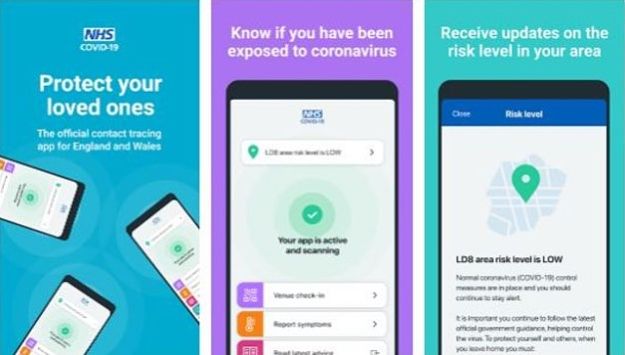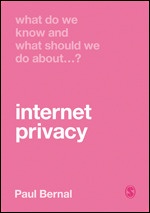Contact Tracing, Privacy, Magical Thinking – and Trust!

The saga of the UK’s contact tracing app(s) should be an object lesson in how not to approach the use of technology in public policy – and why politicians in particular need to step back and rethink their approach to technology, and in particular to privacy. It illustrates some of the key issues discussed in my book What Do We Know And What Should We Do About Internet Privacy. It is the misunderstanding both of the tech and of privacy that lies behind its failure. That failure is abject – it has been a waste of money, time and expertise that could have been put to far better use in addressing the huge problems of the Coronavirus pandemic. It was a distraction, it reduced trust both in tech and in government, as well as being a creator of confusion, frustration and anger. And, so far as we can tell, it has had an almost negligible impact on the pandemic itself.

Privacy, Human Rights, Law, The Internet, Politics and more.
Problems From the Start
The app was fraught with problems from the beginning. Technical problems were just the start. The first version of the app barely worked on iPhones, for example, and communication between iPhones requires someone with an Android phone to be in close proximity – whilst the second one, brought in after the first one was finally abandoned, has had its own issues from false alerts to bugs and worst. Legal problems are another issue – the first version of the app stretched data protection law to its limits – and may well have played a key role in its eventual demise. Then there are practical problems – will the app record you as having contact with people from whom you are blocked by a wall, for example – and the huge issue of getting enough people to download it when many don’t have smartphones, many weren’t savvy enough to get it going, and many more, it seems likely, didn’t trust the app enough to use it.
That’s not even to go into the more fundamental problems with the app – problems that lie behind why the app has seemingly disappeared from pubic view. First of all, it was always unlikely to do what people want it to do – though even what is wanted is unclear, a problem which I will get back to. Secondly, it rode roughshod over privacy in not just a legal but a practical way, and despite what many might suggest people do care about privacy enough to make decisions on its basis.
This piece is not about the technical details of the app – in either its first or its final form – but rather about the underlying problems that have beset this project from the start: misunderstanding privacy, magical thinking, and failure to grasp the nature of trust.
These three issues together meant that the project was always likely to fail, do damage, and distract from genuine ways to help deal with the coronavirus crisis, and the best thing people could have done was not download or use the app, so that the authorities are forced into a rethink and into a better way forward. That people mostly did that was what shifted the government first away from their original, data-centralised app and then to making the app far less critical to the overall approach to the pandemic. Nudging the government from their original and deeply misguided ideas has been one of the defining characteristics of the pandemic.
Misunderstanding Privacy – Part 1
Although people often underplay it – particularly in relation to other people – privacy is important to everyone. Members of Parliament, for example, will fiercely guard their own privacy whilst passing the most intrusive of surveillance laws. Journalists will fight to protect the privacy of their sources even whilst invading the privacy of the subjects of their investigations. Undercover police officers will resist even legal challenges to reveal their identities after investigations go wrong.
This is for one simple reason: privacy matters to people when things are important.
That is particularly relevant here, because the contact tracing app hits at three of the most important parts of our privacy: our health, our location, and our social interactions. Health and location data, as I detail in What Do We Know And What Should We Do About Internet Privacy, are two of the key areas of the current data world, in part because we care a lot about them and in part because they can be immensely valuable in both positive and negative ways. We care about them because they’re intensely personal and private – but that’s also why they can be valuable to those who wish to exploit or harm us. Health data, for example, can be used to discriminate – something the contact tracing app might well enable, as it could force people to self-isolate whilst others are free to move, or even act as an enabler for the ‘immunity passports’ that are still being mooted but are fraught with even more problems than the contact tracing app.
Location data is another matter and something worthy of much more extensive discussion – but suffice it to say that there’s a reason we don’t like the idea of being watched and followed at all times, and that reason is real. If people know where you are or where you have been, they can learn a great deal about you – and know where you are not (if you’re not at home, you might be more vulnerable to burglars) as well as where you might be going. Authoritarian states can find dissidents. Abusive spouses can find their victims and so forth. More ‘benignly,’ it can be used to advertise and sell local and relevant products – and in the aggregate can be used to ‘manage’ populations.
Relationship data – who you know, how well you know them, what you do with them and so forth – is in online terms one of the things that makes Facebook so successful and at the same time so intrusive. What a contact tracing system can do is translate that into the offline world. Indeed, that’s the essence of it: to gather data about who you come into contact with, or at least in proximity to, by getting your phone to communicate with all the phones close to you in the real world.
This is something we do and should care about, and could and should be protective over. Whilst it makes sense in relation to protecting against the spread of an infection, the potential for misuse of this kind of data is perhaps even greater than that of health and location data. Authoritarian states know this – it’s been standard practice for spies for centuries. The Stasi’s files were full of details of who had met whom and when, and for how long – this is precisely the kind of data that a contact tracing system has the potential to gather. This is also why we should be hugely wary of establishing systems that enable it to be done easily, remotely and at scale. This isn’t just privacy as some kind of luxury – this is real concern about things that are done in the real world and have been for many, many years, just not with the speed, efficiency and cheapness of installing an app on people’s phones.
Some of this people ‘instinctively’ know – they feel that the intrusions on their privacy are ‘creepy’ – and hence resist. Businesses and government often underestimate how much they care and how much they resist – and how able they are to resist. In my work I have seen this again and again. Perhaps the most relevant here was the dramatic nine-day failure that was the Samaritans Radar app, which scanned people’s tweets to detect whether they might be feeling vulnerable and even suicidal, but didn’t understand that even this scanning would be seen as intrusive by the very people it was supposed to protect. They rebelled, and the app was abandoned almost immediately it had started. The NHS’s own ‘care.data’ scheme, far bigger and grander, collapsed for similar reasons – it wanted to suck up data from GP practices into a great big central database, but didn’t get either the legal or the practical consent from enough people to make it work. Resistance was not futile – it was effective.
This resistance seemed to happen relation to the contact tracing app too – particularly with the first version of the app – and not least because resistance grows spectacularly when there is little trust in the people behind a project. And, as we shall see, the government did almost everything in its power to make people distrust their project.
Magical Thinking
The second part of the problem is what can loosely be called ‘magical thinking’. This is another thing that is all too common in what might loosely be called the ‘digital age’. Broadly speaking, it means treating technology as magical, and thinking that you can solve complex, nuanced and multifaceted problems with a wave of a technological wand. It is this kind of magic that Brexiters believed would ‘solve’ the Irish border problems (it won’t) and led anti-porn campaigners to think that ‘age verification’ systems online would stop kids (and often adults) from accessing porn (it won’t).
If you watched Matt Hancock launch the app at the daily Downing Street press conference – something that seems like an age ago – you could have seen how this works. He enthused about the app like a child with a new toy – and suggested that it was the key to solving all the problems. Even with the best will in the world, a contact tracing app could only be a very small part of a much bigger operation, and only make a small contribution to solving whatever problems they want it to solve (more of which later). Magical thinking, however, makes it the key, the silver bullet, the magic spell that needs just to be spoken to transform Cinderella into a beautiful princess. It was never going to be that, and the more it was thought of in those terms the less chance it had of working in any way at all. This kind of magical thinking means that the real work that needs to go on is relegated to the background or eliminated at all, replaced only by the magic of tech.
Here, the app seemed to be designed to replace the need for a proper and painstaking testing and tracing regime – something that even now, after many, many months and billions of pounds spent, we don’t have that. In its first form, it was based on self-reporting of symptoms, rather than testing. A person self-reports, and then the system alerts anyone who it thinks has been in contact with that person that they might be at risk. Regardless of the technological safeguards, that leaves the system at the mercy of hypochondriacs who will report the slightest cough or headache, thus alerting anyone they’ve been close to, or malicious self-reporters who either just want to cause mischief (scare your friends for a laugh) or who actually want to cause damage – go into a shop run by a rival, then later self-report and get all the workers in the shop worried into self-isolation.
These were just a couple of the possibilities. There are more – many of which apply even when the system was changed in the second version of the app and worked with testing rather than self-reporting. Stoics, who have symptoms but don’t take it seriously and don’t get tested – or people afraid to report their tests because it might get them into trouble with work or friends. Others who don’t even recognise the symptoms enough to get tested. Asymptomatic people who don’t get tested and can go around freely infecting people and not get triggered on the system at all. The magical thinking that suggests the app can do everything doesn’t take human nature into account – let alone malicious actors. History shows that whenever a technological system is developed the people who wish to find and exploit flaws in it – or different ways to use it – are ready to take advantage.
Magical thinking also means not thinking anything will go wrong – whether it be the malicious actors already mentioned or some kind of technical flaw that has not been anticipated (and there were many). It also means that all these problems must be soluble by a little bit of techy cleverness, because the techies are so clever. Of course they are clever – but there are many problems that tech alone can’t solve
The Issue of Trust
One of those is trust. Tech can’t make people trust you – indeed, many people are distinctly distrustful of technology. The NHS on the other hand does generate trust, and those behind the app may well have assumed that they could ride on the coattails of that trust – but that itself may have been wishful thinking, because they have done almost none of the things that generate real trust – and the app depends hugely on trust, because without it people won’t download and won’t use the app.
How could they have generated that trust? The first point, and perhaps the hardest, was to be trustworthy. The NHS generates trust but politicians do the opposite. These particular politicians have been demonstrably and dramatically untrustworthy, noted for their lies – Boris Johnson having been sacked from more than one job for having lied. Further, their tech people have a particularly dishonourable record – Dominic Cummings was hardly seen as a paragon of virtue even by his own side, one of the reasons for the lack of lamenting when he finally left – whilst the social media manipulative tactics of the leave campaign were remarkable for their effectiveness and their dishonesty.
In those circumstances, that means you have to work hard to generate trust. There are a few keys here. The first is to distance yourself from the least trustworthy people – the vote leave campaigners should not have been let near this with a barge pole, for example. The second is to follow systems and procedures in an exemplary way, building in checks and balances at all times, and being as transparent as possible.
Here, they did the opposite. It was been almost impossible to find out what was going to until the programme was actually already in pilot stage. Parliament – through its committee system – was not given oversight until the pilot was already under way, and the report of the Human Rights Committee was deeply critical. There appeared to have been no Data Protection Impact Assessment done in advance of the pilot – which is almost certainly in breach of the GDPR.
Further, it is still not really clear what the purpose of the project is – and this is also something crucial for the generation of trust. We needed to know precisely what the aims were – and how they were to be measured, so that it could be possible to ascertain whether it was a success or not. We needed to know the duration, what would happen on completion – to the project, to the data gathered and to the data derived from the data gathered. We needed to know how the project would deal with the many, many problems that have already been discussed – and we needed to know that before the project went into its pilot stage. As it was, even almost a year later we still don’t know the answers to any of these questions.
Being presented with a ‘fait accompli’ and being told to accept it is one way to reduce trust, not to gain it. All these processes needed to take place whilst there is still a chance to change the project, and change it significantly – because all the signs were that a significant change would be needed, as I and many others said at the time. As we predicted, the app did not do anything very useful, and it had significant and damaging side effects.
Misunderstanding Privacy – Part 2
…which brings us back to privacy. One of the most common misunderstandings of privacy is the idea that it’s about hiding something away – hence the facetious and false ‘if you’ve got nothing to hide you’ve got nothing to fear’ argument that is made all the time. In practice, privacy is complex and nuanced and more about controlling – or at least influencing – what kind of information about you is made available to whom.
This last part is the key. Privacy is relational. You need privacy from someone or something else, and you need it in different ways. Privacy scholars are often asked ‘who do you worry about most, governments or corporations?’ Are you more worried about Facebook or GCHQ. It’s a bit of a false question – because you should be (and probably are) worried about them in different ways, just as you’re worried about privacy from your boss, your parents, your kids, your friends in different ways. You might tell your doctor the most intimate details about your health, but you probably wouldn’t tell your boss or a bloke you meet in the pub.
With the coronavirus contact tracing app, this is also the key. Who gets access to our data, who gets to know about our health, our location, our movements and our contacts? If we know this information is going to be kept properly confidential, we might be more willing to share it. Do we trust our doctors to keep it confidential? Probably. Would we trust the politicians to keep it confidential? Far less likely. How can we be sure who will get access to it?
Without getting into too much technical detail, this is where the key current argument is over the app. When people talk about a centralised system, they mean that the data (or rather some of the data) is uploaded to a central server when you report symptoms. A decentralised system does not do that – the data is only communicated between phones, and doesn’t get stored in a central database. This is much more privacy-friendly, but does not build up a big central database for later use and analysis. This is why privacy people much preferred the idea of a decentralised system – and why the government eventually had to shift to one – because, amongst other things, it keeps the data out of the hands of people that we cannot and should not trust. Out of the hands of the people we need privacy from.
The government did not seem to see this. They were keen to stress how well the data is protected in ‘security’ terms – protected from hackers and so forth – without realising (or perhaps admitting) that the people we really want privacy from, the people who present the biggest risk to the users, are the government themselves. We don’t trust this government – and we should not really trust any government, but build in safeguards and protections from those governments, and remember that what we build now will be available not just to this government but to successors, which may be even worse, however difficult that might be to imagine.
Doomed From the Start?
I could well be accused of being ‘Captain Hindsight’ for suggesting that this project was doomed from the start – but the original version of this blog post, which predicted this failure, was written and posted in May 2020 on my personal blog. I was far from alone in predicting that failure – because scholar and other ‘experts’ (the kind Britain has had enough of) do understand these things, and seemingly much better than governments. This is where my book What Do We Know And What Should We Do About Internet Privacy comes in. It’s intended to help explain these issues and why misunderstanding them is not just bad for the people who are the victims but unlikely to help you to achieve your objectives. It can help projects to be better shaped and more likely to succeed. Learning lessons is hard without making mistakes – but we can and should do better at doing it.



























































































